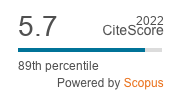Edible insects are being framed as a panacea for health, resource and climate challenges, and the ‘entomophagy movement’ is growing rapidly. Yet as the insect ‘solution’ is scaled up, there is a greater focus on technical innovation and less on the structural inequalities that govern who produces within, who controls, and who benefits from the edible insect trade. We ask: To what extent is the promotion of ‘entomophagy’ challenging or reproducing power relations in global food systems? Drawing on evidence from academia, industry, and the local insect trade in Southeast Asia we critically investigate the rising interest in insects as food. We conducted a systematic literature review, a systematic company and product review of products available online, and fieldwork in Thailand where the edible insect market is growing. Our analysis suggests that the emerging edible insects movement is – generally but not exclusively – reinforcing the existing power relations that many of its actors suggest it could challenge. We conclude our paper with recommendations for further research to investigate the disparity between the claims and consequences of this ‘quick-fix’ approach to food systems. Beyond relying on solely technical and market-based solutions, we recommend more ‘power-aware’ approaches in academia and business, accountability and transparency in research and trade, more detailed critical research in different contexts, and the inclusion of marginalised actors in the discourse, as means to realise the potential of edible insects in a democratic way.
RESEARCH ARTICLE
Entomophagy and Power
A. Müller Related information
1Department of Social Sciences, Humboldt-Universität zu Berlin, Universitätsstraβe 3B, 10117 Berlin, Germany
2Nordic Food Lab, Department of Food Science, University of Copenhagen, Rolighedsvej 26, 1958 Frederiksberg C, Denmark
*andrewmueller@posteo.
, J. Evans Related information2Nordic Food Lab, Department of Food Science, University of Copenhagen, Rolighedsvej 26, 1958 Frederiksberg C, Denmark
*andrewmueller@posteo.
2Nordic Food Lab, Department of Food Science, University of Copenhagen, Rolighedsvej 26, 1958 Frederiksberg C, Denmark
, C.L.R. Payne Related information3Conservation Science Group, Department of Zoology, David Attenborough Building, University of Cambridge, New Museums site, Cambridge CB2 3QY, United Kingdom
4British Heart Foundation Centre on Population Approaches for Non-Communicable Disease Prevention, Department of Population Health, New Richards Building, University of Oxford, Old Road Campus, Headington OX3 7LF, United Kingdom
, R. Roberts Related information4British Heart Foundation Centre on Population Approaches for Non-Communicable Disease Prevention, Department of Population Health, New Richards Building, University of Oxford, Old Road Campus, Headington OX3 7LF, United Kingdom
2Nordic Food Lab, Department of Food Science, University of Copenhagen, Rolighedsvej 26, 1958 Frederiksberg C, Denmark
Journal of Insects as Food and Feed: 2
(2)- Pages: 121 - 136

Published Online: June 08, 2016
Abstract
Keywords: edible insects, food security, global economy, social inequality, Thailand
2022 Journal Impact Factor
5.7
source: Journal Impact Factor 2023™ from Clarivate™

Institutional Offers
For institutional orders, please contact [email protected].
Purchase Options
-
G. Daş, M.M. Seyedalmoosavi, K. Schleifer, M. Mielenz and C.C. Metges
-
-
M. Barrett, S.Y. Chia, B. Fischer and J.K. Tomberlin
-
D.G.A.B. Oonincx and M.D. Finke
-
G. Bosch and K.S. Swanson
-
K.B. Barragan-Fonseca, M. Dicke and J.J.A. van Loon
-
A. van Huis
-
M. Tschirner and A. Simon
-
S. Kelemu, S. Niassy, B. Torto, K. Fiaboe, H. Affognon, H. Tonnang, N.K. Maniania and S. Ekesi
-
M.B. Ruby, P. Rozin and C. Chan
Now available: Open Access JIFF Special Issue as follow-up of the book 'Insects as food and feed: from production to consumption'
read more



